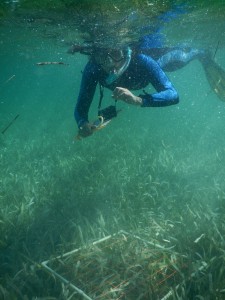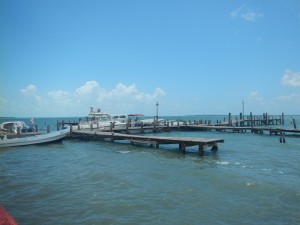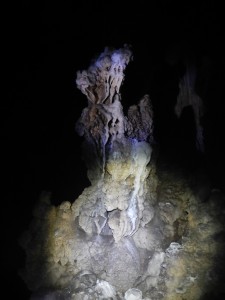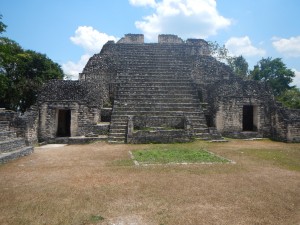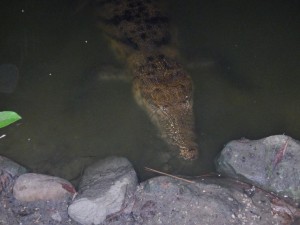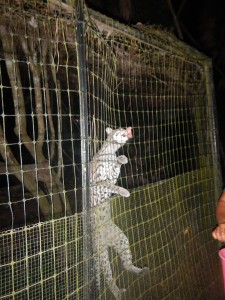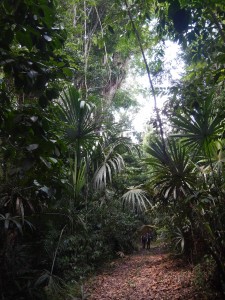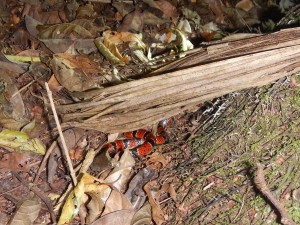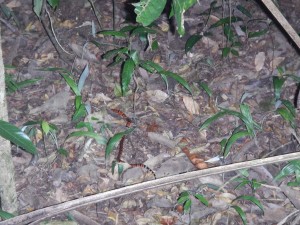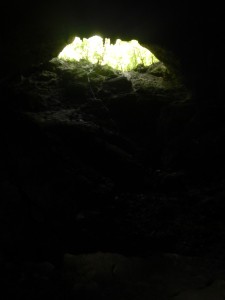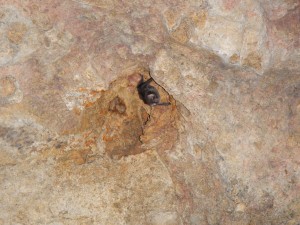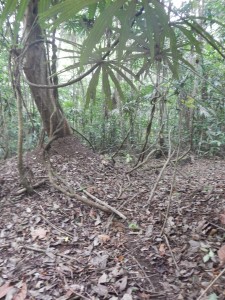Today we continued with our quadrat theme to look at stony corals inside Glover’s Reef Atoll. For our first boating expedition, we ventured to a marine protected area (MPA) to study the health of coral reefs. Our day was entirely dedicated to data collection, but I still found a huge amount of herbivorous fish hiding among the corals. The dusky damselfish (Stegastes fuscus) is definitely the most common, but all three species of damselfish mentioned in my last blog are very easy to find on the patch reefs. I also found several ocean surgeonfish (Acanthurus bahianus). Like all surgeonfish, this species has a scalpel-like spine on their tail used for slashing predators that’s fairly easy to see in the water.
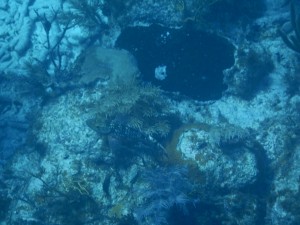
I also managed to find a red and brown stoplight parrotfish (Sparisoma viride) in what is known as its initial phase. Parrotfish are unique in that they can change their sex; initial phase parrotfish are either females or primary males. However, the large, conspicuously colored parrotfish are actually supermales, or females that later became males. Guess even fish can be transgender.
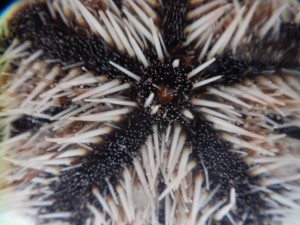
We also spent a good portion of the day collecting sea urchins to assess reef health. You can find urchins in all the nooks and crannies of a reef, but it turns out getting them out is the hard part. We managed to collect a fair number (sustaining only minor injuries) before measuring them and sorting them by species.
Each day on the reef, we learn about a different taxonomic group, adding them to our arsenal. It’s incredible how each presentation adds yet another dimension to my next visit to the reef. Two days ago, I wouldn’t have been able to tell you what Acropora cervicornis was, but now I’m able to spot it (both alive and dead) out on the reef.
And finally, we ended it all by laying on the dock under the stars. The ocean and sky merge together here, forming an infinite black canvas littered with pinpricks of light. Forgive me for the romance, but I might’ve even seen a shooting star. Isn’t it pretty to think so?

